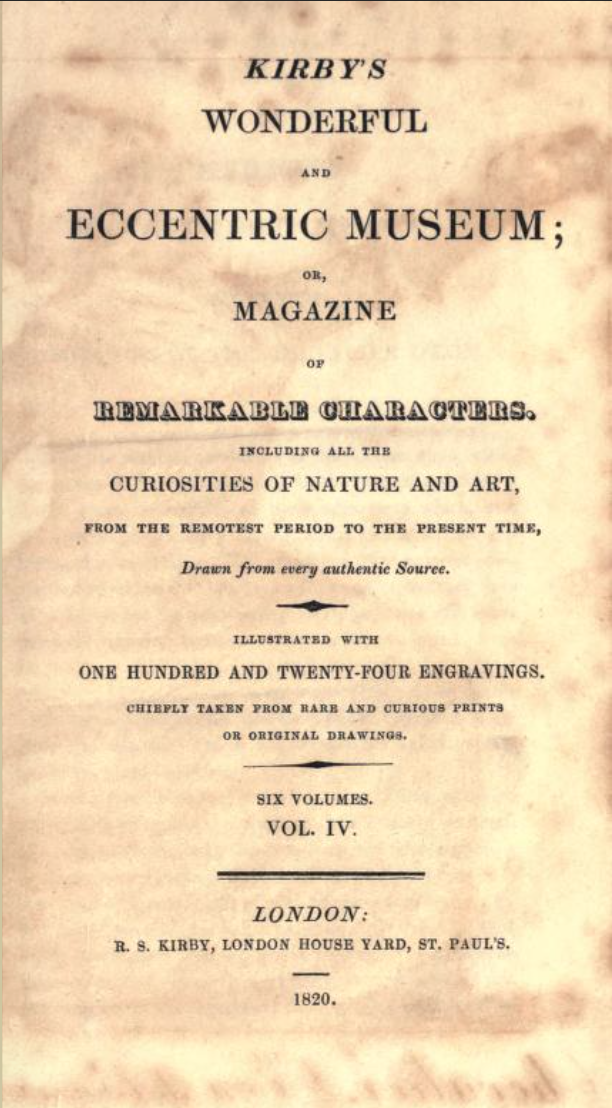
Kirby’s Wonderful and Eccentric Museum, title page.
Kirby’s Wonderful and Eccentric Museum was a collection of volumes published in the early 19th century detailing a variety of oddities, as its title suggests.
In a chapter entitled “Account of Some Remarkable Circumstances of Disease,” author R.S. Kirby includes a curious section regarding “Animals generated in the Human Body.”
There is no name for this disease, nor any explanation of it. Kirby simply offers a description of this most curious 18th-century condition:
August 16, 1760, Mr. Thomas Clap, of Newhaven, gives the following account of living animals found in the skin of a child, belonging to Mr. Moses Beecher, of the same place.
It had a cutaneous eruption, resembling the chicken pox; the pustules became very protuberant, near as big as a duck shot, the head being dark coloured, and the rest yellowish. Upon opening some of the pustules, there appeared to be a great number of animals in them, which were scarce discernible to the naked eye, but seen to be animals by their swift motion in crawling. One of them was brought to the college, and being viewed in the microscope, it appeared to be a perfect tortoise, or turtle, with upper and lower shells, each divided into about then partitions, which were beautifully coloured, red, yellow, and white. The head, tail, and legs appeared very distinct; but the eyes did not grow in the head, but as it were out of the shoulders, and stood upon two pillars, very much resembling those of a lobster. The eyes appeared like little globes of glass, were immoveable, and had no eye-lids.
To the best of my knowledge, no microscopic turtles have been born from pimples, boils or carbuncles. Perhaps, however, this was a creative—and exaggerated—interpretation of bacterial microorganisms, which was still a relatively new discovery. If so, it may very well be the most entertaining description of popped zits ever given.
Regardless, this is certainly not the only tale of animals emerging from humans. As recently as 2015, a Somali woman reportedly gave birth to a snake.




![Premature Burial [Public domain], via Wikimedia Commons-Illustration for Edgar Allan Poe's story The Premature Burial by Harry Clarke (1889-1931), published in 1919.](https://www.weirdhistorian.com/wp-content/uploads/2017/09/premature-burial-crop-235x190.jpg)

